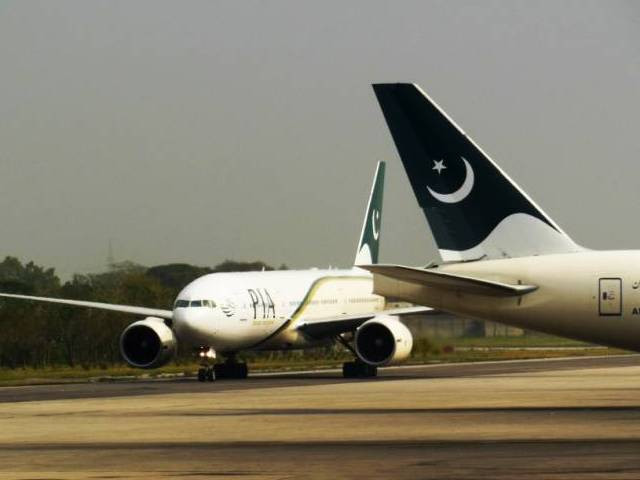Turning PIA around
Not only does he have to turn around the airline, but also rebuild its brand

PHOTO: FAISAL MOIN/EXPRESS
Unlike most international airlines, PIA does not report information on these indicators. A few years ago, at least some of these could be found in the national carrier’s annual reports, but not any more. One could assume that these were conveniently dropped to avoid public scrutiny. In fact, its website does not even have the financial statements available, past the first quarter of 2016, against the Securities and Exchange Commission of Pakistan’s mandatory requirement.
Nevertheless, data collected from the 2015 annual report and various other sources can still make some revelations. Turning around PIA would hinge on three goals: improving safety and quality, cutting costs and enhancing revenues. In an earlier article, I wrote about the national carrier’s poor safety record and need to minimise human error, responsible for majority of accidents. But there is another important dimension. The average age of its fleet is 10 years, almost double than that of Emirates, Qatar and Etihad airlines. With poor maintenance regime, one could imagine the predicament of these old worn-out aircraft.
PIA’s operational fleet consists of Boeing 777 for long haul and Airbus A320 and ATR planes for medium and short-haul flights, all of which were designed decades ago. The fleet looks extremely meek when compared to other regional airlines that have more modern aircraft. Emirates alone has 94 premium Airbus A380 planes. Our national carrier needs to replace its aging fleet with newer better aircraft, which will reduce maintenance costs, improve safety and attract high value customers.
Exorbitant costs pose another challenge for it, where employee-related costs claim the biggest share. It has 14,000+ employees, as per 2015 report. Global website airfleets net reports only 32 active aircraft for PIA, translating into an employee to aircraft ratio of 446, which is almost four times higher than Air India and six to seven times more than Turkish Airlines.
Employees’ costs reported by PIA in 2015 were Rs16.9 billion. When welfare, social security costs, retirement benefits and compensated absences were added, these amounted to Rs21+ billion. Additionally, another Rs7 billion of employee-related costs were reported as distribution and administrative costs. These Rs28+ billion claimed 27% of net revenues. Interestingly, Emirates, with its internationally competitive salaries and world-class service, spent almost half, in terms of percentage, on its employees in 2015. There is a need to immediately rationalise PIA’s unproductive massive workforce. Air India, which faced a similar challenge, successfully reduced its workforce by more than 60% in just two years.
Lastly, turning PIA into a profitable airline will require increasing its revenues. Presently its revenue per aircraft stands at merely $26 million per year, while the revenue per passenger is only $55, manifesting poor mix of routes, smaller aircraft and lower international tariffs attributable to poor service quality. The three Middle Eastern airlines mentioned above make $50-$100+ million per aircraft per annum, while their revenue per passenger ranges from $400-$500.
Successive governments have tried to turn around the national carrier, but so far these efforts have been fruitless. PIA recently got a new CEO, a man with impeccable reputation, but an enormous challenge is already cut out for him. Not only does he have to turn around the airline, but also rebuild its brand, tarnished by recent scandals.
However, the mandate for such a turn around must come from the top. Strong political ownership, commitment to reform, management autonomy and a sizeable equity injection is what the ailing national carrier needs.
Published in The Express Tribune, July 26th, 2017.
Like Opinion & Editorial on Facebook, follow @ETOpEd on Twitter to receive all updates on all our daily pieces.














COMMENTS
Comments are moderated and generally will be posted if they are on-topic and not abusive.
For more information, please see our Comments FAQ